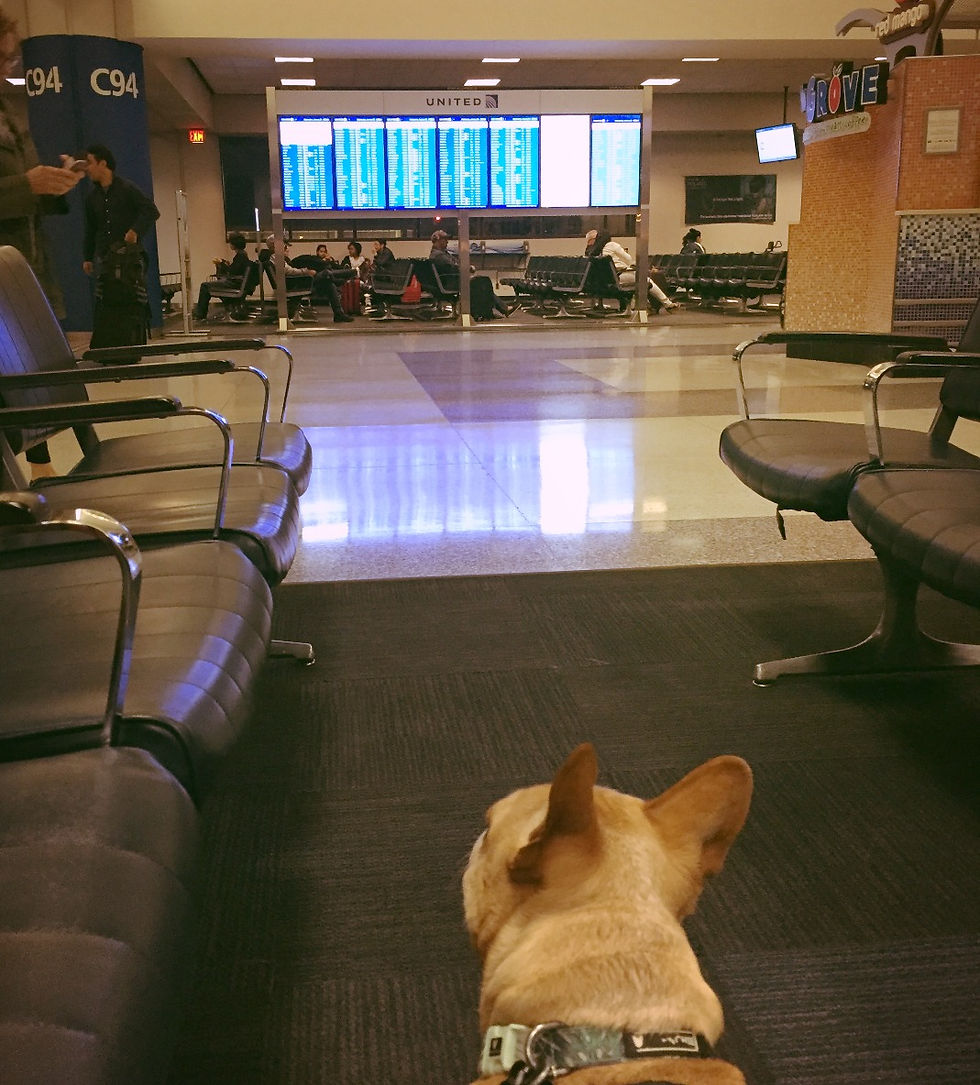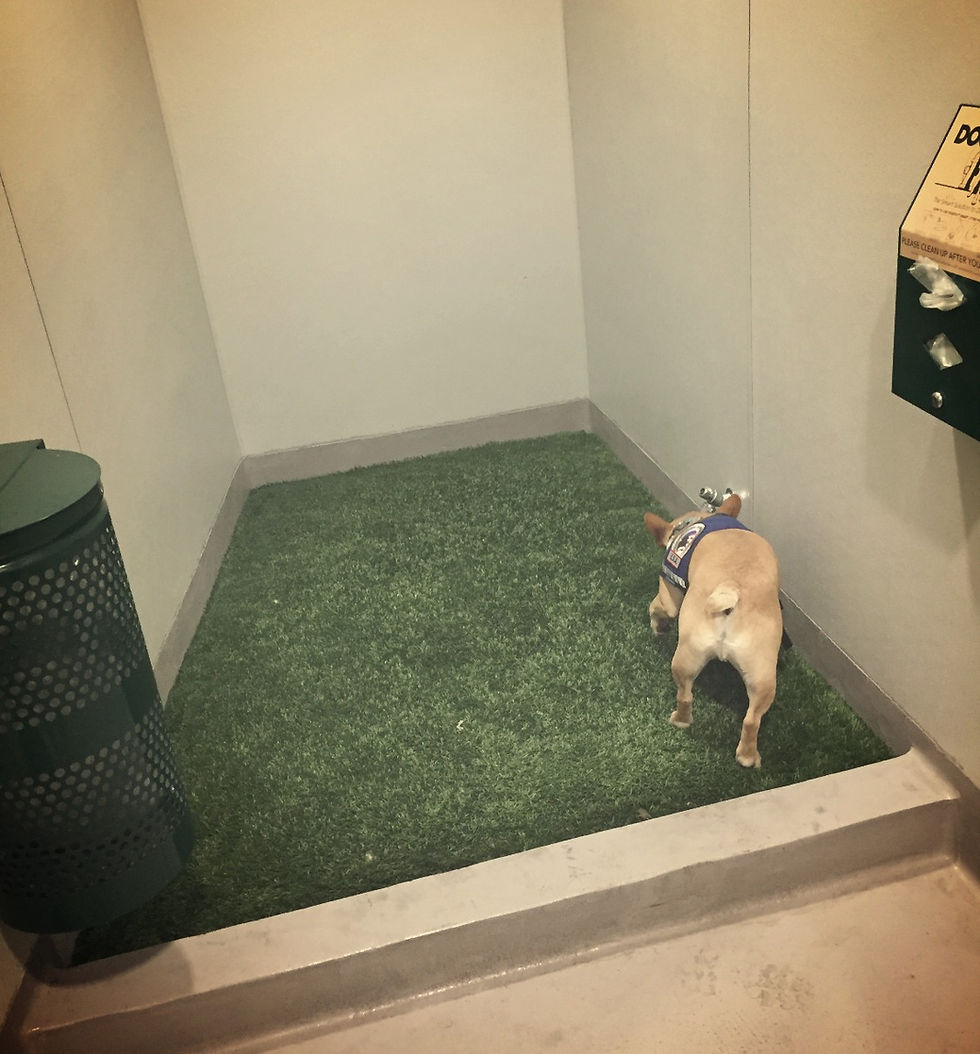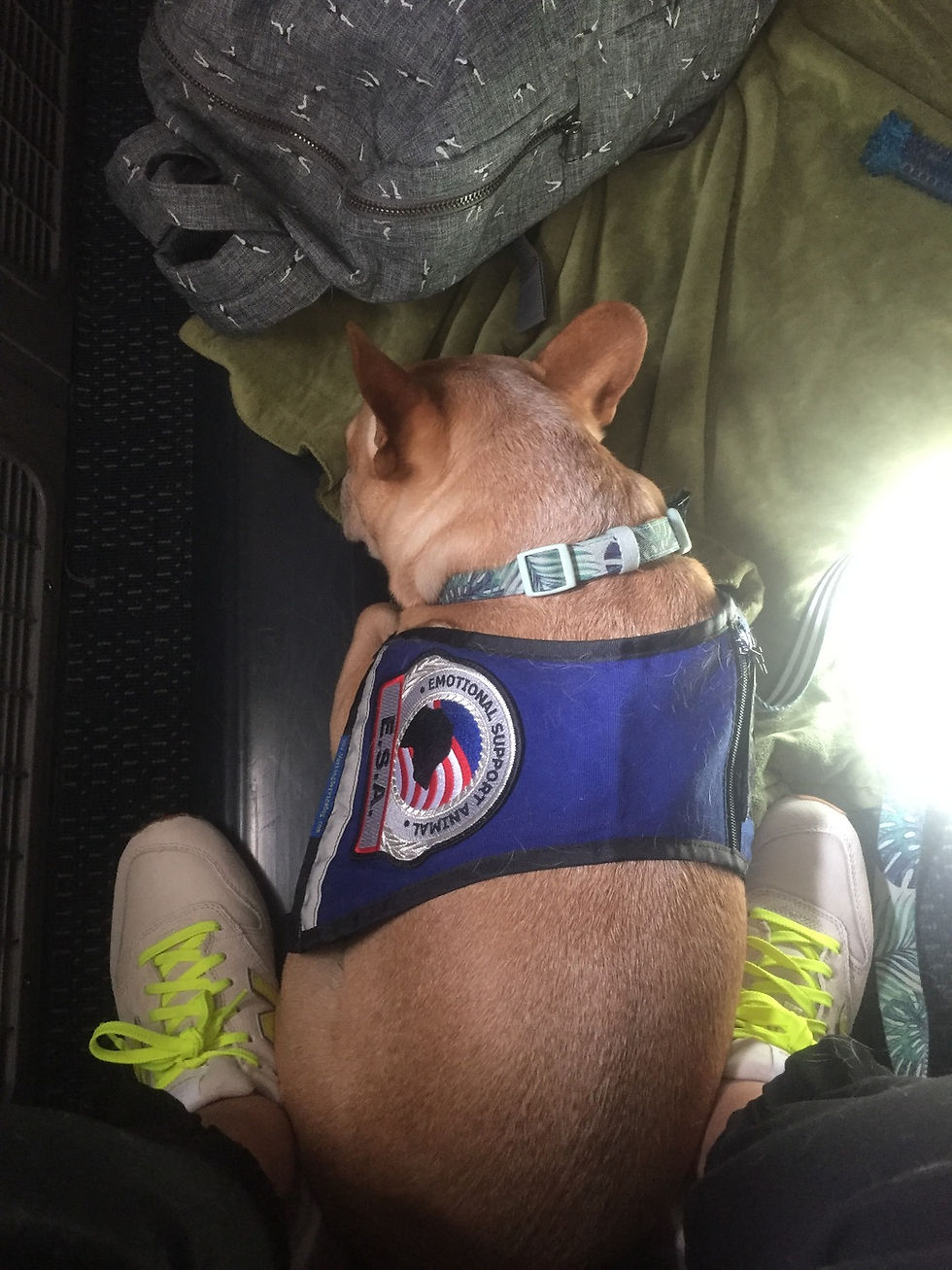Tips for Traveling with a Pet
- Ashley Casorio
- Jan 4, 2018
- 5 min read

For those of us with a serious case of wanderlust, owning a pet can no doubt be challenging. Finding good care for them while we are gone (not to mention the expense of good care) and the overall guilt factor of leaving them behind is almost enough to make us not want to leave home at all. Almost.
For years I had wanted to live in Hawaii. The challenge? My French bulldog who is a complicated animal to travel with (the challenge of getting a pet into Hawaii is another conversation for another time) kept me from pursuing my dream and making Hawaii a reality. Potential health risks aside with his breed, there are so many unknown things that can happen during air travel like flight delays, long layovers, and how he would do on a plane overall, so I was nervous about making the long trek from New Jersey. In the end, I decided I would bite the bullet and just go for it.
Here are some tips that will help you to make your plans easier:
1. Decide on a routing that will be easiest on your pet
A 10+ hour flight is just too long for my pup. What if his stomach was having an off day? Bulldog owners know exactly what I'm talking about. What if we couldn't drain his energy enough and he "came to life" as we like to say and wanted to do zoomies throughout the cabin? I decided we would break up the trip, going through LAX on an early morning flight when he is the sleepiest and overnighting in Santa Monica and then continuing on with another early flight in the morning. Here he is pictured below living it up at the JW Marriott Santa Monica Le Merigot:

2. Do your research on pet-friendly airports
I chose LAX for a few reasons:
it had the shortest flight time for both segments
we could overnight in Santa Monica and let Beau run on the beach and trot around town so that he was completely exhausted by the end of the day, making him almost like a little rag doll the following morning (he's not a morning dog!)
this is a big one: they had an indoor pet relief area that coincidentally was nearby our gate!


Many airports are doing major renovations and this includes adding pet relief areas. A lot of airports will say that they have pet relief areas, however when you take a closer look, you'll see that these are located outside of the terminal. This means, that you will have to use them prior to going through security. If you are the type to get to the airport two hours prior to your flight, this tacks on another two hours in addition to your flight time that your pet will have to hold it.
Newark Liberty International Airport has not yet gotten with the times, leaving me to check in, check my luggage, and head down to baggage claim (the area closest to a grassy area) where we sat until it was the last second for us to go through security, allowing him to go a few more times.
3. Pick a seat that will be comfortable for the both of you
With airlines continuing to pack in more and more seats on airplanes, some rows can be pretty tight. You want to make sure both you and your pet are comfortable throughout the journey and that means plenty of legroom. Pick the bulkhead in economy or if you are able to fly in business or first class, then I recommend doing so. I redeemed miles for United Business seats on United for both legs. EWR to LAX were the flat bed seats on a Boeing 757 which is a bit tighter than some of their larger aircraft, but still gave us a little nook for Beau to lay down.
From LAX to HNL, we were on a Boeing 777 which meant chairs instead of the flat beds, but an expanse of legroom in front of us. I am 5'8" and when stretching my legs straight out, I couldn't touch the seat in front of me. It allowed me to lay down his blanket and for him to sleep comfortably.

4. Get a health certificate
Many airlines and many destinations will require you to get a health certificate for your pet which basically states that they are up to date on their vaccines and they are healthy enough for air travel. This will need to be done within 10 days of travel. Airlines are supposed to ask you for the certificate prior to boarding, however they don't always ask. Do your research on your destination and, when in doubt, call your carrier to see what paper is required for pre-boarding and even disembarking.
5. Plan out their meal times
If you're taking an early morning flight, I recommend feeding your dog their "dinner" around 4:00pm the day prior and let that be the last meal for them until they land in their destination. My dog is not one to really want to eat in the morning, so I knew we could get away with no food until LA. It's important to understand your pet's schedule so that you can avoid them needing to go in the middle of a flight. No water on the morning of the flight either!
6. Go hands free and pack a bag just for them
As it is, I hate being a bag lady at the airport, so the last thing I wanted was to have my hands so full in addition to the dog leash. I put my stuff in a backpack along with all of his accoutrements. Here are the things that I found invaluable to have with me (note: my dog was not in a bag and laid at my feet the whole flight):
Benadryl which we gave to him about an hour before take off
a collapsable water bowl
a bottle of water picked up at the airport
his favorite little blanket so he was familiar and comfortable
some of his favorite treats (I only gave these to him if necessary to avoid "awakening" his system)
a travel size air freshener (again, bulldog owners will know what I mean)
his favorite bone
Beau loves his chew toys and it proved to be the best thing to bring with us. He chewed it during the flight and, most importantly, chewed it during landing and was not even phased by the changes in cabin pressure or the bumps along the way
There's no doubt a bit of pre-planning will go a long way. No trip is ever perfect and we certainly encountered our share of issues, but I was prepared for them which help to keep me calm and, in turn, kept my dog calm as well. Ok, fine, maybe this mimosa helped too...









Comments